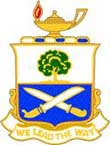eMonticello
Posts: 525
Joined: 3/15/2002
Status: offline

|
quote:
ORIGINAL: Arimus
If the US had suffered a major setback in the Pacific and needed more aircraft and those aircraft were available then they would have been assigned to the PTO.
A simple solution could be to place units on the east coast with a number of airframes and allow the allied player to buy them with PP's.
This would simulate what would really happen and is within the realm of possibilities as far as game-engine capabilities.
Perhaps in a Rainbow 2 or 3 scenario?
" RAINBOW 1 assumed the United States to be at war without major allies. United States forces would act jointly to prevent the violation of the Monroe Doctrine by protecting the territory of the Western Hemisphere north of 10 degrees South Latitude, from which the vital interests of the United States might be threatened. The joint tasks of the Army and Navy included protection of the United States, its possessions and its sea-borne trade. A strategic defensive was to be maintained in the Pacific, from behind the line Alaska-Hawaii-Panama, until developments in the Atlantic permitted concentration of the fleet in mid-Pacific for offensive action against Japan.
RAINBOW 2 assumed that the United States, Great Britain, and France would be acting in concert, with limited participation of U.S. forces in continental Europe and in the Atlantic. The United States could, therefore, undertake immediate offensive operations across the Pacific to sustain the interests of democratic powers by the defeat of enemy forces.
RAINBOW 3 assumed the United States to be at war without major allies. Hemisphere defense was to be assured, as in RAINBOW 1, but with early projection of U.S. forces from Hawaii into the western Pacific.
RAINBOW 4 assumed the United States to be at war without major allies, employing its forces in defense of the whole of the Western Hemisphere, but also with provision for United States Army forces to be sent to the southern part of South America, and to be used in joint operations in eastern Atlantic areas. A strategic defensive, as in RAINBOW 1, was to be maintained in the Pacific until the situation in the Atlantic permitted transfer of major naval forces for an offensive against Japan.
RAINBOW 5 assumed the United States, Great Britain, and France to be acting in concert; hemisphere defense was to be assured as in RAINBOW 1, with early projection of U.S. forces to the eastern Atlantic, and to either or both the African and European Continents; offensive operations were to be conducted, in concert with British and allied forces, to effect the defeat of Germany and Italy. A strategic defensive was to be maintained in the Pacific until success against the European Axis Powers permitted transfer of major forces to the Pacific for an offensive against Japan."
In actuality, FDR adopted something closer to Rainbow 5...
"Though the President had not given his approval, the decision on the course the United States would follow in the event it was "compelled to resort to war" had, in effect, been made. The United States would make the main effort in the Atlantic and European area where the major enemy, Germany, was located, Just how the final blow would be delivered was not yet known, but the Americans expected it would require a large-scale ground offensive. In the Pacific and Far East, United States strategy would be defensive, with greatest emphasis on the area encompassed by the strategic triangle, Alaska-Hawaii-Panama. Implicit in this concept was acceptance of the loss of the Philippines, Wake, and Guam, Thus, in a period of less than three years, the Pacific orientation of U.S. strategy, developed over a period of many years, was completely reversed. By mid-1941, in response to the threat from Europe, the eyes of American strategists were focused on the Atlantic. It was there, they believed, that the war in which the United States was certain to be involved would be decided.
These expectations were more than fulfilled. Though the war when it came opened with an attack in the Pacific, the President and his military advisers made it clear at the outset in the first of the wartime conferences with the British held at Washington in December 1941-January 1942 (ARCADIA) that they would stand by their decision to defeat Germany first. Not once during the course of the war was this decision successfully challenged."
http://www.history.army.mil/books/70-7_01.htm
_____________________________
Few things are harder to put up with than the annoyance of a good example. -- Pudd'nhead Wilson
|
 Printable Version
Printable Version

 as the losses in AK's and AP's has been staggering.
as the losses in AK's and AP's has been staggering.

















 New Messages
New Messages No New Messages
No New Messages Hot Topic w/ New Messages
Hot Topic w/ New Messages Hot Topic w/o New Messages
Hot Topic w/o New Messages Locked w/ New Messages
Locked w/ New Messages Locked w/o New Messages
Locked w/o New Messages Post New Thread
Post New Thread